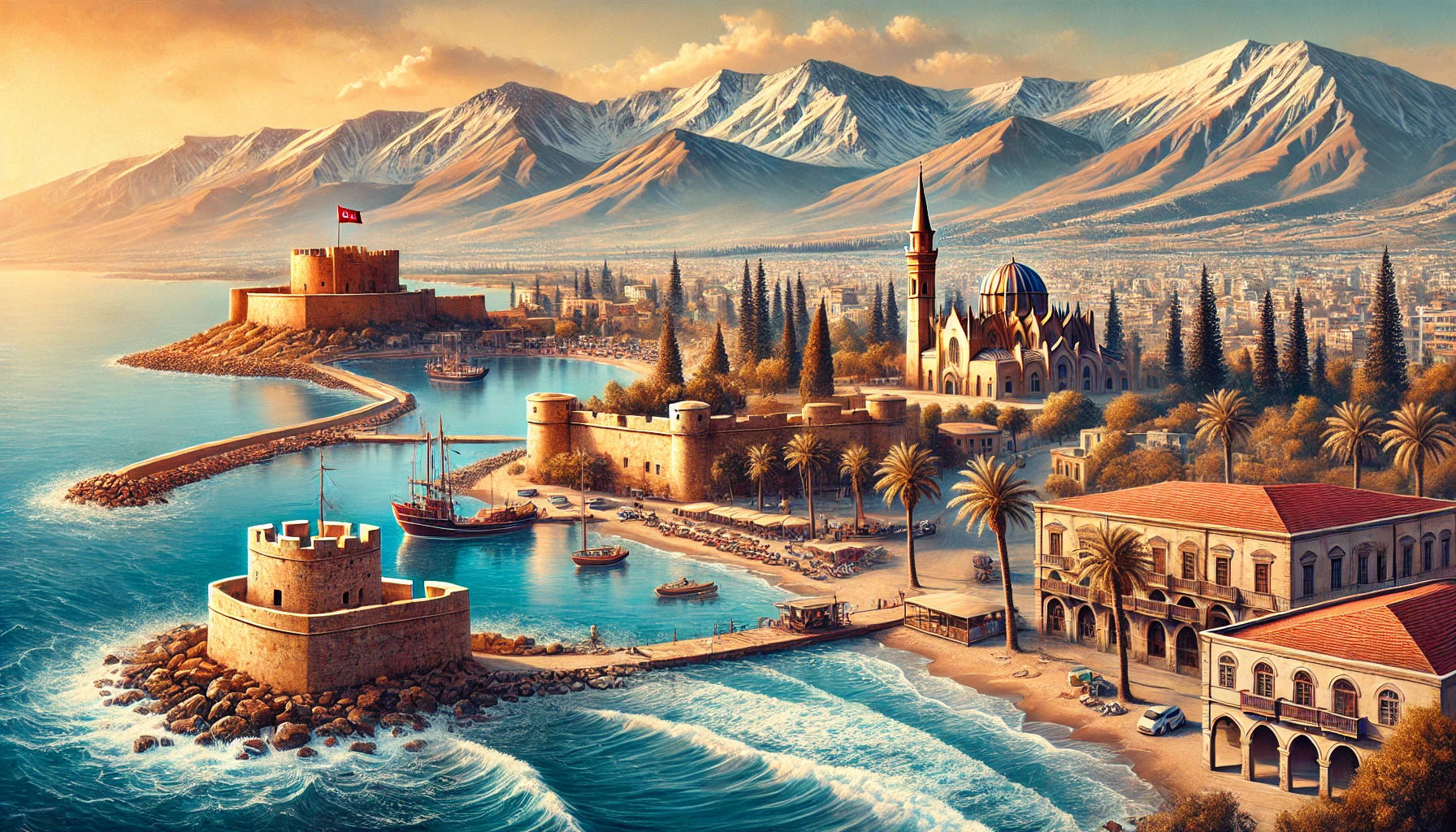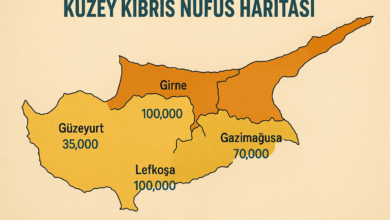
Table of Contents
- 1 Establishment and History of the Turkish Republic of Northern Cyprus
- 2 Geographical Location and Area
- 3 Climate of Northern Cyprus
- 4 The Capital of Northern Cyprus and Other Important Cities
- 5 Population of Northern Cyprus
- 6 Economy of Northern Cyprus
- 7 Education in Northern Cyprus
- 8 Culture and Traditions of Northern Cyprus
Establishment and History of the Turkish Republic of Northern Cyprus
History of the Turkish Republic of Northern Cyprus, establishment of the TRNC
The Turkish Republic of Northern Cyprus (TRNC) is a state officially declared on November 15, 1983 and is located in the northern part of the island of Cyprus. In 1974, after Turkey's Peace Operation in Cyprus, Greek Cypriots and Turkish Cypriots started to live on the island as two separate communities. After these events, the Turkish Cypriot people declared their independence and the TRNC was established. However, Northern Cyprus, which is not recognized by the international community, is only officially recognized by Turkey. This has been the basis of political and diplomatic disputes in Cyprus for years.
Geographical Location and Area
Geographical structure of TRNC, area of Northern Cyprus
Northern Cyprus is located in the eastern part of the Mediterranean Sea and covers about one third of the island. With an area of 3,355 square kilometers, the TRNC is approximately 65 kilometers from the southern coast of Turkey. Northern Cyprus has a rich geography with mountains, plains and coastline. The Beşparmak Mountains lie in the north of the island and are one of the most important geographical elements of the region. In addition, the coastline of Northern Cyprus stretching from west to east is famous for its magnificent beaches and tourist attractions.
Climate of Northern Cyprus
North Cyprus climate, TRNC weather
North Cyprus has a typical Mediterranean climate with hot and dry summers and mild and rainy winters. In summer, temperatures usually range between 30-35°C with long sunny days. In winter, temperatures drop to around 10-15°C. Precipitation is usually concentrated in the winter months. These characteristics of the climate have made Northern Cyprus a year-round tourist destination. Especially summer tourism is an attractive option for tourists who want to have a sea, sand and sun vacation.
The Capital of Northern Cyprus and Other Important Cities
North Cyprus cities, Nicosia, Kyrenia, Famagusta
The capital of the Turkish Republic of Northern Cyprus is **Lefkosa**. Nicosia is also one of the largest cities on the island and is located in both Greek Cyprus and Northern Cyprus. Nicosia is one of the political, economic and cultural centers of the island. In addition, cities such as Kyrenia, Famagusta, Guzelyurt are also among the important residential areas of Northern Cyprus. **Kyrenia is a popular tourist destination and is famous for its harbor. **Famagusta is known for its historical and cultural richness, while **Güzelyurt** is known for its agriculture and citrus production.
Population of Northern Cyprus
TRNC population, how many people live in Northern Cyprus
As of 2024, the population of the Turkish Republic of Northern Cyprus is around 350,000. Most of the population is concentrated in large cities such as Nicosia, Kyrenia and Famagusta. The demographic make-up of the population consists mainly of Turkish Cypriots of Turkish origin. Immigrants from Turkey also represent a significant population group. The fact that the population in the TRNC is young and educated has a positive impact on the economic and social structure of the country.
Economy of Northern Cyprus
TRNC economy, Northern Cyprus economic structure
The economy of the Turkish Republic of Northern Cyprus is largely based on the service sector, tourism, education and agriculture. Especially universities and the tourism sector have an important place in the economic structure of the country. Many international universities in Northern Cyprus are preferred by foreign students and the education sector provides an important source of income for the country. In addition, the tourism sector is one of the locomotives of the country's economy. Northern Cyprus attracts tourists with its historical richness and natural beauties. Apart from tourism, the agricultural sector also makes a significant contribution, especially with citrus production.
Tourism and Resorts
Places to visit in Northern Cyprus, TRNC tourism
Northern Cyprus offers an attractive destination for tourists. Especially historical sites such as **Girne Castle**, **St. Hilarion Castle**, **Salamis Ruins** and **Bellapais Monastery** are among the important tourist attractions that attract tourists. In addition, the Karpaz Peninsula and Altinkum Beach are excellent destinations for those who want to explore the natural beauty of Northern Cyprus. The warm Mediterranean climate and pristine beaches in the region make Northern Cyprus a must for vacationers, especially during the summer months.
Education in Northern Cyprus
Northern Cyprus universities, TRNC education system
Northern Cyprus has become an important center for education. There are many international universities in the country and these universities offer an attractive study option, especially for students from Turkey, the Middle East and Africa. **Eastern Mediterranean University**, **Near East University** and **Girne American University** are some of the most well-known universities in TRNC. The education sector also contributes greatly to the country's economy.
Culture and Traditions of Northern Cyprus
Northern Cyprus culture, Turkish Cypriot traditions
Turkish Cypriot culture has been influenced by both Ottoman and Mediterranean cultures. Traditional Cypriot food, hospitality and family values are key elements of Turkish Cypriot society. Local delicacies such as **Hellim cheese**, **peach kebab** and **molehiya** are prominent flavors of Northern Cyprus cuisine. Folk music and folk dances are also an important part of Turkish Cypriot culture. Especially traditional weddings are an important part of social life in Northern Cyprus.
The Turkish Republic of Northern Cyprus continues to be one of the pearls of the Mediterranean with its rich history, unique natural beauties, educational opportunities and hospitable people. This small state located in the north of the island is developing day by day and becoming a regional center of attraction with sectors such as tourism, education and agriculture.



